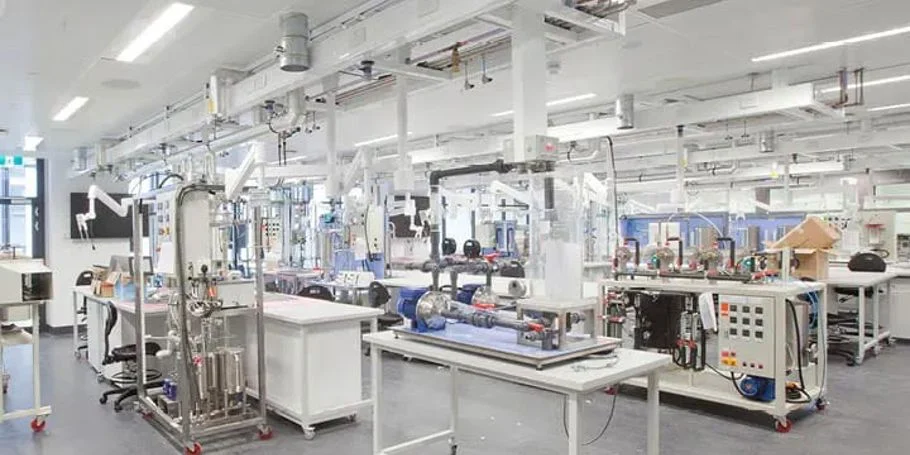Designing for adaptive reuse while accommodating Seattle’s new energy code requirements
As life sciences tenants typically utilize sensitive laboratory equipment, their workspaces and labs are significantly more vulnerable to vibrations than those of traditional office tenants. Because of this and the fact that the existing buildings were constructed using relatively light (i.e. “bouncy”) post-tension floor slabs, the new life sciences labs at Unison Elliott Bay needed to have vibration mitigation features implemented from the outset to prevent significant interference, particularly from a nearby heavy rail line. Arup provided vibration consulting to guide the developer’s decisions to cost-effectively realize a suitable and operational environment for future tenants. Especially amidst rising construction material and equipment costs, Arup collaborated closely with all parties to meet these complex requirements while maintaining the construction schedule by finding innovative approaches to achieving these goals. By aligning on an adaptive reuse approach from the outset of design, the project realized embodied carbon savings of 73%, which is significant for this type of project.
Despite the intensive energy needs required for a life sciences development of this nature, Unison Elliott Bay is one of the first adaptive reuse buildings to comply with Seattle’s highly progressive energy code requirements. Through tailored and thorough studies, Arup helped to develop and navigate the implementation of a more complex mechanical design that meets or exceeds the energy code requirements. This coordinated approach included installing critical mechanical equipment on the building’s rooftop as opposed to its typical location indoors. Arup leveraged mechanical, electrical, and plumbing engineers coupled with acoustics experts to determine and manage this strategic placement for the critical utilities. Arup also took measures to ensure that the equipment’s operational noise on the exterior of the buildings would not disrupt the surrounding community, complying with Seattle’s noise ordinance.
Implementing an all-electric design
Prioritizing decarbonization and designed to be all-electric, Unison Elliott Bay is equipped with advanced utility and energy performance systems that were designed using digital modelling tools. These optimized systems allow for the critical laboratory energy requirements to be met by efficient, electric operations.
The fully electric design utilizes a system that includes air source heat pumps, heat recovery chillers, and backup electric boilers, eliminating the need for gas-fired boilers. Arup leveraged its energy modelling and energy code expertise to navigate and successfully negotiate code approval with the City of Seattle.
To address standard lab safety considerations, our mechanical engineers teamed with our acoustics experts and vibration team to ensure a holistic approach to lab exhaust was taken. These teams also collaborated with a wind consultant to ensure safety, community noise concerns, and lab tenant vibration requirements were simultaneously satisfied.







